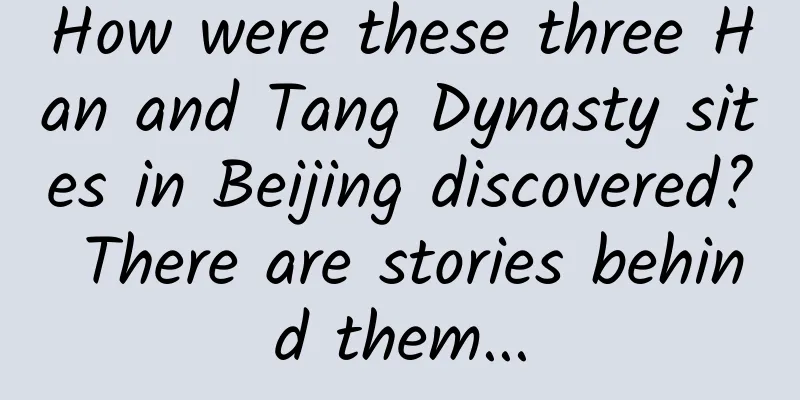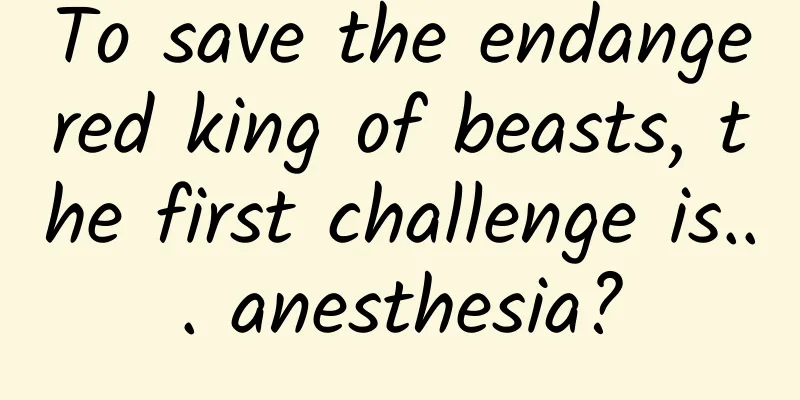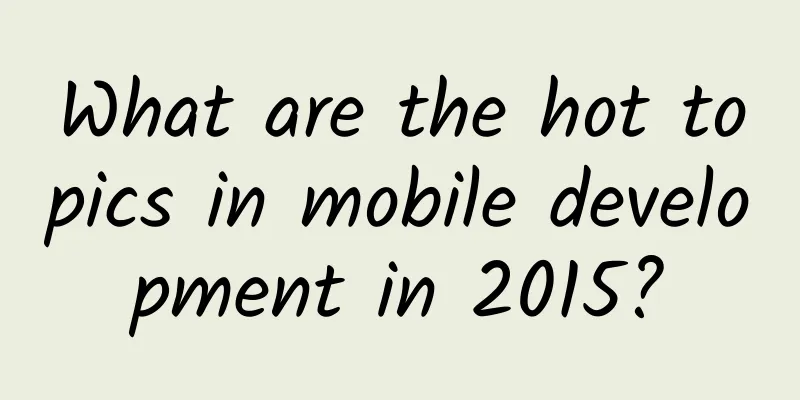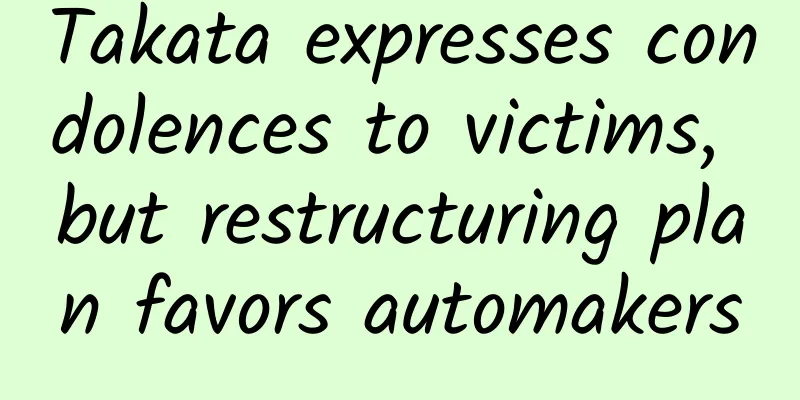How were these three Han and Tang Dynasty sites in Beijing discovered? There are stories behind them...

|
How were these Han and Tang Dynasty sites discovered? At a recent symposium on the protection and development of the three cultural belts held by the Municipal CPPCC, Shu Xiaofeng, deputy director of the Municipal CPPCC Education, Health, Sports and Culture and History Committee and former director of the Municipal Cultural Relics Bureau, told the stories behind the above archaeological discoveries and introduced the historical evolution and key and difficult issues of the protection and development of the three cultural belts to the participating members and experts. "If you visit one place a day, you can't visit all in ten years!" Shu Xiaofeng said that this year marks the 870th anniversary of Beijing's establishment as the capital. As a world-famous ancient capital, Beijing has a history of more than 3,000 years and has left behind a rich cultural heritage, with 3,840 immovable cultural relics alone. Beijing has always attached great importance to cultural protection for many years, and the construction of the Grand Canal Cultural Belt, the Great Wall Cultural Belt, and the Xishan Yongding River Cultural Belt has become a consensus among all sectors of the city. Shu Xiaofeng said that in recent years, the overall protection of Beijing's old city has been effectively strengthened, the protection and restoration of key cultural relics in the three cultural belts has been continuously promoted, great progress has been made in the improvement of the environment around the cultural relics and the evacuation of key cultural relics and historical buildings, and fruitful results have been achieved in the protection of large sites. All of this has greatly demonstrated the profound cultural connotations of the three cultural belts. " That was in 2016, just after the fifteenth day of the first lunar month. We mobilized more than 1,700 prospectors from all over the country to carry out preliminary archaeological surveys for the construction of the city's sub-center ." Speaking of the protection of large sites, Shu Xiaofeng introduced the discovery of the ruins of the ancient city of Lu County in the Western Han Dynasty located in the Grand Canal Cultural Belt. The ruins of the ancient city of Lu County were discovered under a pile of barren rubble. Shu Xiaofeng was excited but also nervous: In the sub-center where every inch of land is valuable, can the ruins of the ancient city of Lu County, covering an area of more than 700,000 square meters, be preserved? It turns out that yes! At that time, the Municipal Cultural Relics Bureau proposed six protection suggestions, including overall protection of the original site, construction of a site museum, construction of a site park, and rerouting of Tonghu Road that runs through the site park. All of them were adopted by the municipal government. It is not uncommon in Beijing to discover large ruins during archaeological exploration in the early stages of a project. For example, to the east of Guangyangcheng Station on the Fangshan Line, the ruins of Guangyangcheng City in the Han Dynasty were preserved in their original location and a ruins park will be built; a section of the wall of Tanzhou City in the Tang Dynasty was discovered at the new site of the Miyun District Chinese Medicine Hospital, and the hospital was relocated, and a ruins park will be built at the original site; during the construction of the Lize Financial Business District, the wall ruins of Jin Zhongdu City were discovered, and a Jin Zhongdu City Ruins Park will be built... "With the development of science and technology today, the technology for protecting cultural heritage should be further improved so that more high-end technologies can be applied to cultural heritage protection." Shu Xiaofeng used the "锔山" case of Jietai Temple to suggest the importance of building a communication platform and opening up application scenarios for cultural heritage protection. In 2004, cracks appeared in the walls and halls of the Jietai Temple in Mentougou. After multiple investigations, no one knew the cause of the cracks. Later, geologists were found to have discovered that it was caused by a landslide. Traditional methods of restoring cultural relics and ancient buildings are simply not a solution to landslides. Eventually, the Beijing Municipal Bureau of Cultural Relics found the China Railway Northwest Research Institute and came up with a solution. They built ground beams on both sides of the landslide mountain, and "fixed" the mountain like fixing a basin or a bowl, ultimately protecting the ancient buildings of the Jietai Temple. In addition, Shu Xiaofeng also suggested that the historical and cultural connotations of the three cultural belts should be further deepened in the protection and development. "In recent years, the construction of the three cultural belts has achieved many research results, but it is undeniable that some of the results, especially popular reading materials, have the phenomenon of rehashing old ideas, lack of innovation in content and form, and some are even full of errors and omissions, and spread rumors." Shu Xiaofeng said that the study of the three cultural belts cannot be limited to conventional historical materials such as "Rixia Jiuwen Kao" and "Shuntian Fuzhi", but the scope of research should be expanded. For example, the sorting out of personal collections of essays from the Ming and Qing dynasties can be used to explore the historical and cultural connotations of the three cultural belts, which can produce more insightful research results. At the symposium, the participating members and experts offered suggestions on how to carry out the research and consultation: some suggested strengthening the integration of culture and tourism and the development of cultural products, exploring historical culture, telling the story of the thousand-year-old capital well, and realizing the use of culture to shape tourism and tourism to promote culture; some suggested paying attention to the protection and utilization of industrial and agricultural cultural heritage in the three cultural belts; some suggested breaking down institutional and mechanism barriers, improving the coordination mechanism, and forming a joint force for protection and construction. Relevant person in charge of the Education, Health, Sports and Culture and History Committee of the Municipal CPPCC introduced that this year the Municipal CPPCC will carry out key research and consultations around the theme of "strengthening the protection and development of the three cultural belts, and safeguarding the historical context of the thousand-year-old capital", in order to coordinate the protection and development of the three cultural belts, build an overall protection pattern of historical and cultural heritage, and safeguard the historical context of Beijing's thousand-year-old capital, and put forward suggestions. Source: Beijing Daily Client |
<<: About the "little incident" of bringing a herd of rabbits to Australia in 1859
>>: Does breathing through the mouth really ruin your appearance?
Recommend
Earthquake Savior: The History of Seismographs
Written by Snow A seismograph is an instrument th...
What changes will 5G mobile phones bring under the new 5G standard R16?
At a recent meeting of the international standard...
Yunman Entrepreneurship Talks about Making Money in Utopia 14 Courses
Yunman Entrepreneurship Talks about Making Money ...
Ma Bingbing Education MCA Algorithm High Frequency Questions Explanation
Course Catalog ├──If you don’t master the basic da...
Dating of Liujiang Man brings us one step closer to the origin of modern humans in East Asia!
Produced by: Science Popularization China Author:...
"Being the heroine of a 1-hour idol drama", 3 revelations behind 2.34 million viewers
Most of us exist in social networks. In some even...
If my WeChat account is blocked, who will protect my “right not to be forgotten”?
In the Internet age, many of people's behavio...
Latest research: Sunbathing can prevent dementia! But too much or too little sun exposure can cause dementia!
The team led by Professor Yu Jintai from Huashan ...
"Unique" bird fossils fill the 70 million-year gap in bird brain evolution|Expo Daily
Could Black Swans Become an Invasive Species in m...
Wei An's 18 High-Paying Sales Lessons Audio
Wei An's 18 high-paying sales lessons audio, ...
Pinduoduo-style promotion through old customers bringing in new customers! (two)
1. What is the activity of bringing new customers...
5 Social Media Marketing Strategies You Need in 2019
In overseas marketing , whether it is product mar...
Is the “Christmas hat” that is flooding the WeChat Moments an accidental “scam”? 5000 words to restore the whole incident
Around 10 p.m. on December 22, 2017, the WeChat M...
It only takes 3 steps to reduce the cost of information flow advertising. Which step have you taken?
Dear optimizer friends, have you ever encountered...









